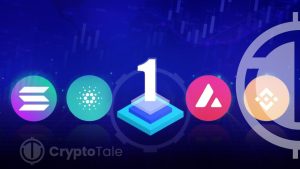
Eclipse, a blockchain technology firm, recently celebrated the launch of its much-anticipated Layer 2 (L2) mainnet. Designed to be one of Ethereum’s fastest, the mainnet went live earlier this week. This is a significant milestone for Eclipse, a company that has been at the forefront of blockchain innovation.
The mainnet employs the Solana Virtual Machine (SVM) for its execution environment. This move promises to bring optimized parallel execution and local fee markets to the Ethereum ecosystem. The architecture is a blend of the best features from various modular stacks, including Ethereum for settlement and SVM for execution.
The newly launched mainnet is engineered to settle its transactions on the Ethereum network, using ETH as its gas token. This strategic decision is in line with Eclipse’s recognition of Ethereum’s security and liquidity advantages. Eclipse nodes are configured to refer to a validating bridge on Ethereum to determine the canonical chain, inheriting certain security properties from Ethereum.
The architecture also addresses the limitations of single-threaded runtimes like the Ethereum Virtual Machine (EVM). The SVM’s Sealevel runtime enables parallel transaction execution. This allows the system to scale directly with hardware improvements, a significant advancement over the EVM, where state growth has been a more pressing bottleneck.
Data availability is another cornerstone of Eclipse’s new architecture. The mainnet posts its data to Celestia, a platform renowned for its scalable data availability. Celestia’s Data Availability Sampling (DAS) light nodes are expected to contribute to securely scaling the entire network.
The mainnet aims to offer a general-purpose L2 capable of massive scale. It challenges the prevailing notion that modular necessarily means app-specific and fragmented. It seeks to combine the high performance of Solana’s execution environment with the security and network effects of Ethereum.
Eclipse also joined hands with Polygon, a leading Ethereum scaling protocol, earlier this year. The partnership aims to launch Polygon SVM, a Layer 2 blockchain compatible with all smart contracts and tooling developed for Solana. The testnet for this initiative is expected to be released in late Q1 2023, with the mainnet launch slated for the summer.














